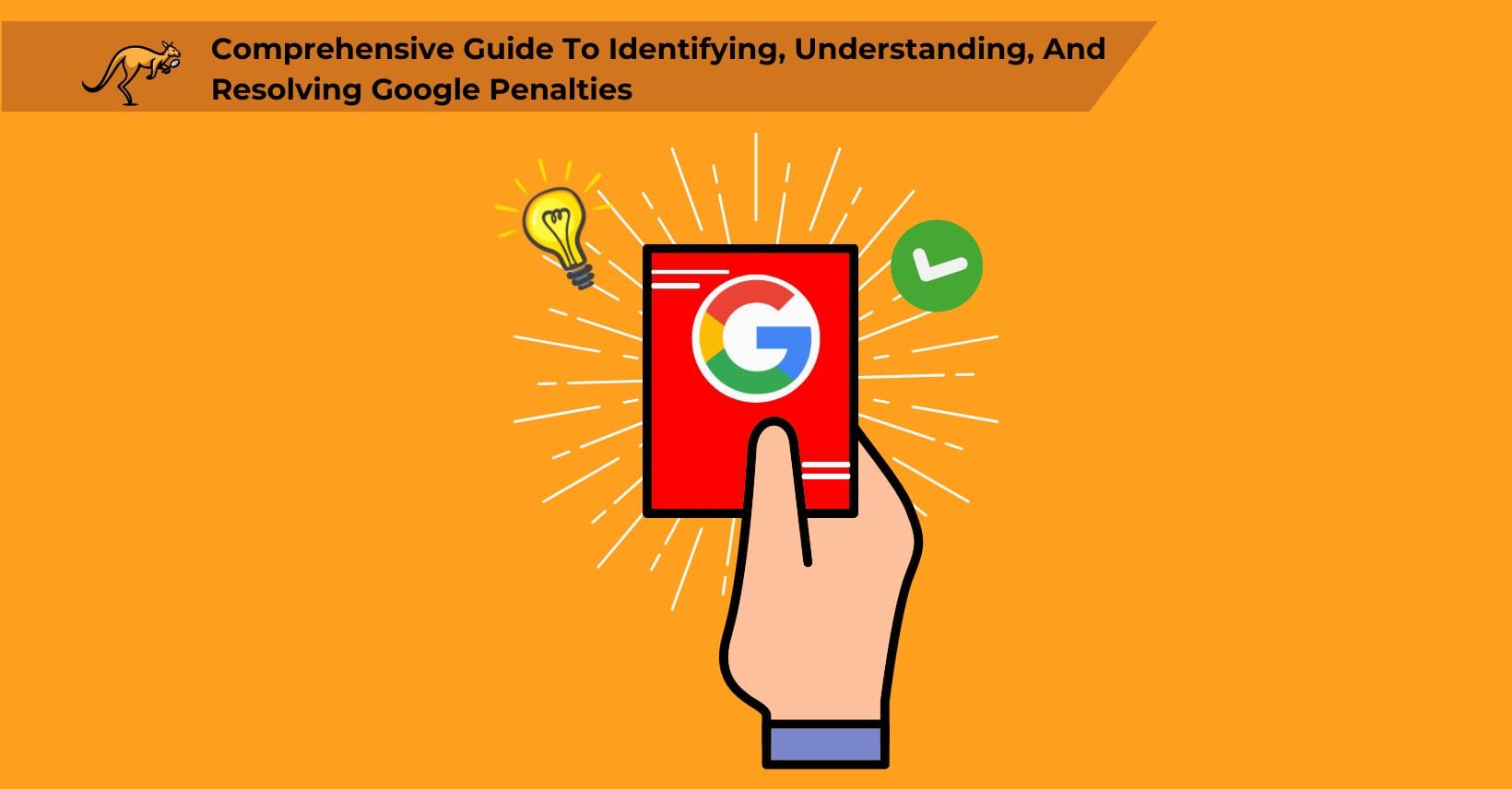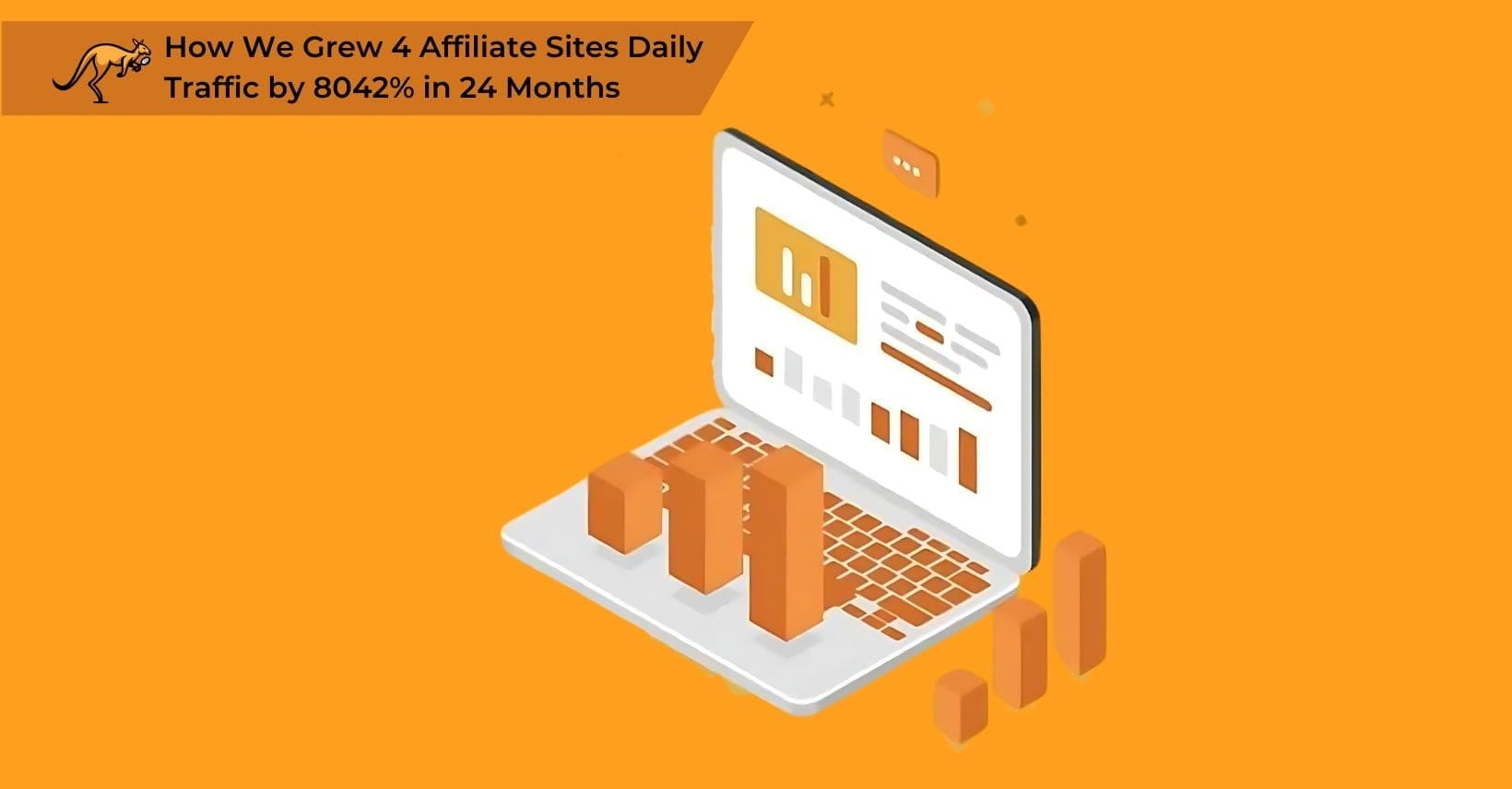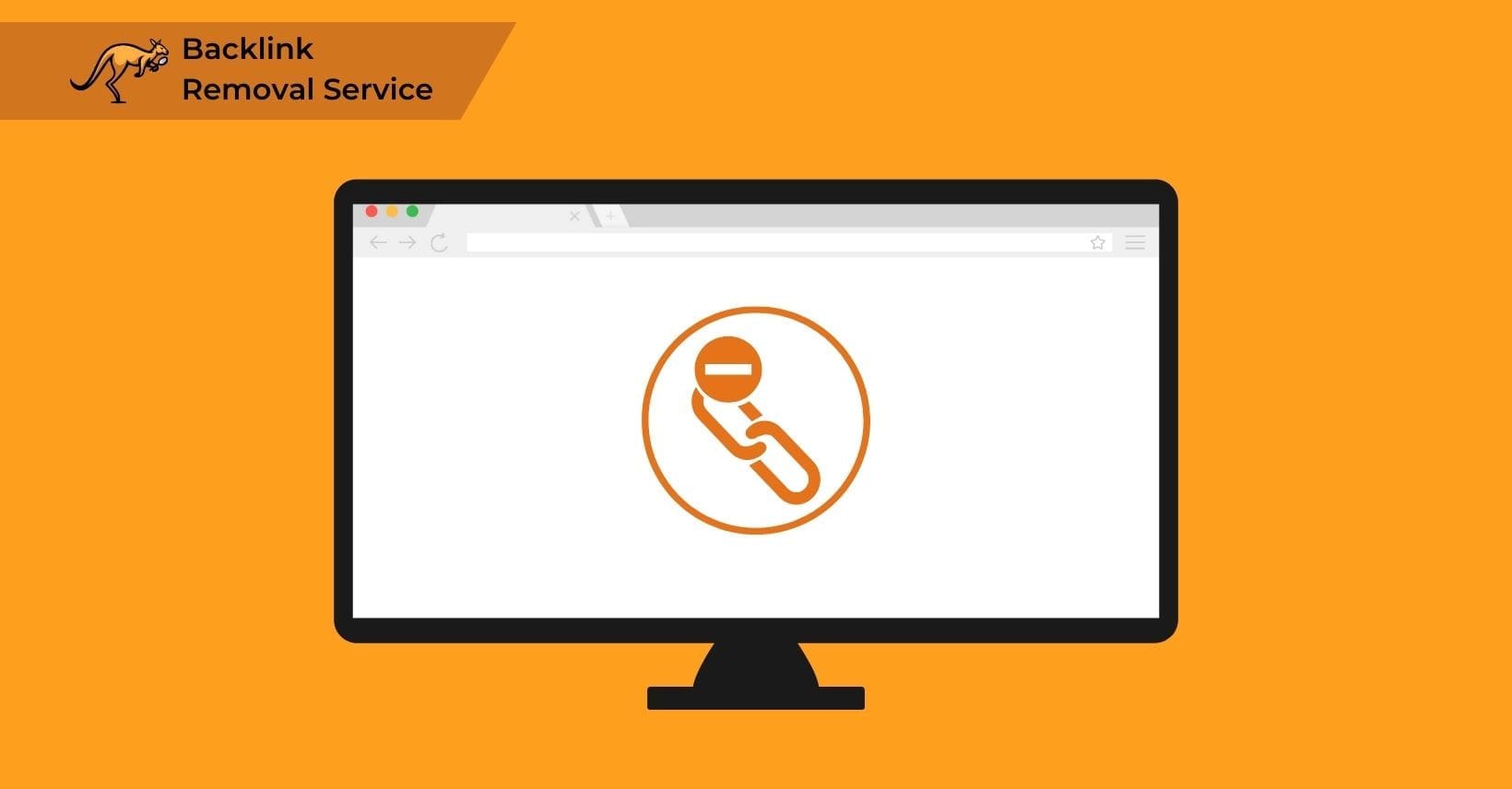Your domain may be penalized by Google if you observe sudden drops in website traffic, significant ranking decreases across multiple keywords, disappearance from search results for branded terms, or reduced crawling frequency by Googlebot, which are clear signs that Google has applied a penalty to your site.
While these penalties are not usually brand-destroying, they have an undeniable impact on your performance and visibility. This means that it is often important to know if (and why) you have a Google penalty to deal with.
What is a Google Penalty?
When your site is penalized by Google, it is either partially or fully removed from the Google index.
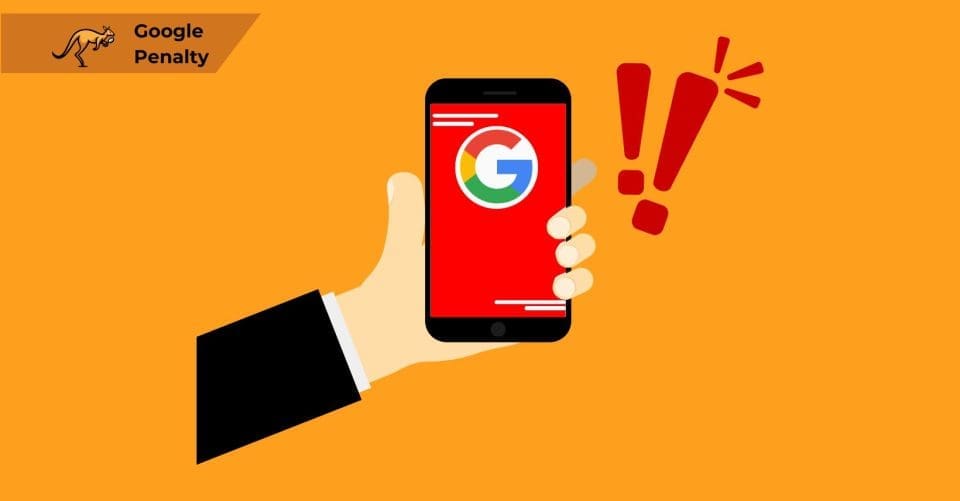
Any parts of the site that are no longer indexed are effectively ignored by Google’s ranking algorithm, meaning that they have no SEO impact and are not usually visible in search results.
Not only does this drop the rankings of the site as a whole, but it can also prevent exact pages from appearing, even if they are relevant.
When a website faces a sudden drop in traffic due to lost visibility, it disrupts user access to exact content and negatively affects the site’s overall ranking. This decline in search engine rankings makes it increasingly challenging for the website to appear prominently for relevant queries.
Such a scenario underscores the importance of understanding the different Types of Penalties that can lead to these issues, guiding us toward identifying and addressing the root causes effectively.
Types of Penalties
Manual and algorithmic Google penalties differ fundamentally in their application and notification process, with manual penalties being applied directly by Google’s team with explicit notifications in Search Console, while algorithmic penalties occur automatically through algorithm updates without direct notifications and require analysis of traffic patterns to identify.
Manual Penalty
A manual penalty is applied by a member of the Google team and is usually done in response to something major, such as a site-wide issue or something that impacts the majority of pages on your site.
While this does not actually change anything regarding the penalty itself, you often get detailed warnings regarding what the problem is, along with a list of corrections that you can use to fix the issue.
Once corrected, you can send a reconsideration request to Google. This will prompt them to take another look at your site, with them usually removing the penalty if all of the stated issues are fixed.
Algorithmic Penalty
Algorithmic penalties occur silently, without alerts from Google Search Console, leaving site owners to deduce their presence from changes in site performance.
These penalties result from updates to Google’s algorithms that flag issues within your site’s content or SEO practices. Without direct notifications, identifying these penalties requires analyzing your analytics data for sudden shifts in traffic or rankings.
Understanding these changes is crucial, as it sets the stage for exploring the consequences faced by your site, leading us to consider what happens after a penalty is applied.
What Happens After a Penalty?
Once you get penalized by Google, your site will start to lose some or all of its traffic. You will also lose Google’s trust, which usually means that your SEO efforts will get weaker in general (even if only a few web pages were actually penalized).
Google prefers high-quality sites full of high-quality content, so any deviation from their standards (such as certain pages being part of spammy link schemes or a site creating a large flood of unrelated and thin content) can sometimes get at least part of your site penalized.
SEO efforts affected by Google penalties show distinct patterns of diminished effectiveness, with rankings dropping despite continued optimization work, keywords previously ranking well suddenly disappearing from search results, and link building activities yielding minimal impact, which requires checking both manual action reports and traffic patterns to confirm penalty influence.
In general, at least for a while after receiving and responding to the penalty, it will become harder to rank at the same level that your site used to reach. This is because penalties do some substantial damage to the trust that Google has in your site.
When is a Google Penalty Applied?
Google penalties are essentially the SEO equivalent of suspensions or red flags. These are handed out to moderate the actions of different sites and as a warning to stop using questionable ranking-boosting methods or black hat SEO options.
Google will employ these penalties to deal with any sites that violate its guidelines, even if those violations are technically very small ones.
For example, building excessive link schemes of spam links or making obvious attempts to pay for extremely valuable but irrelevant links will usually get you penalized.
These penalties are not permanent, but they can last a long time.
The more severe the reason was for the penalty, the longer these generally last, and penalties for serious violations may even require you to approach Google to ask for approval first.
In simple terms, these penalties are used to remove sites from the search algorithm if they are a bad fit or are using questionable techniques.
Google prefers to serve authentic and useful content to its users, so sites full of low-quality content and rules violations are usually dealt with quickly.
How Long Do Penalties Last?
A Google penalty can have lasting effects if unresolved, with manual penalties requiring corrective action and a successful reconsideration request for removal and algorithmic penalties often lingering until the next algorithm update.
While penalties may appear to “expire,” unresolved issues may lead to penalties reapplying with future updates. This ongoing risk underscores the importance of monitoring your site’s health and recognizing signs of algorithmic penalties, a critical step in maintaining your site’s search engine standing and avoiding the cycle of penalties.
Understanding these dynamics is important as we explore how to detect if your website is suffering from algorithmic penalties.
How to Tell If Your Website Has Algorithmic Penalties
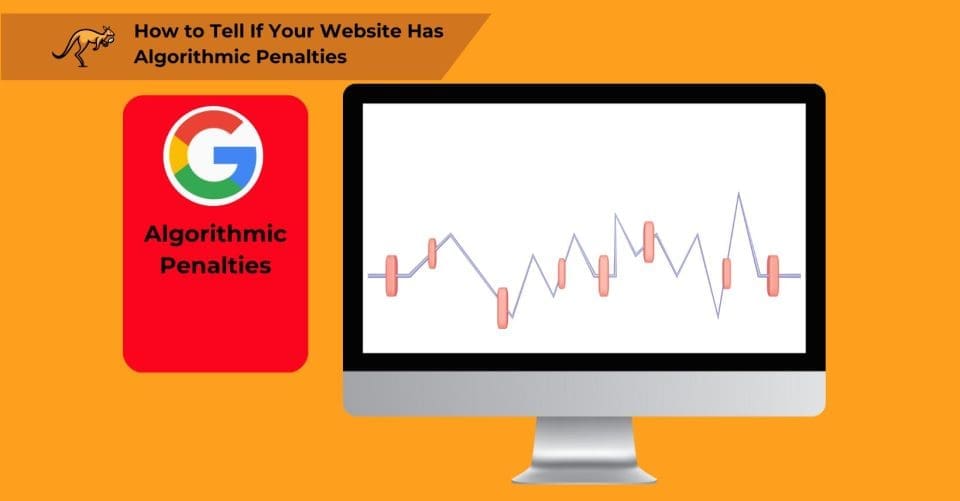
Website owners can check for Google penalties by monitoring traffic patterns in Google Analytics and reviewing manual action reports in Google Search Console, which provides clear indicators of whether a site has been penalized for violating Google’s guidelines.
Google Search Console and Google Analytics serve as essential tools for checking Google penalties, with Search Console revealing manual actions directly and Analytics helping identify traffic drops that coincide with algorithm updates which may indicate algorithmic penalties.
The primary methods involve scrutinizing Google Search Console for direct indications of manual penalties or analyzing your site’s performance data for abrupt declines in search rankings or traffic drops.
This essential first step sets the foundation for addressing potential issues, leading directly into exploring how to especially handle manual penalties by logging into Google Search Console.
For Manual Penalties – Log In to Google Search Console
If your site is not already set up with Google Search Console, then you should do that as fast as possible.
Google Search Console provides specific sections for identifying penalties, including the Manual Actions report which explicitly lists manual penalties, the Security Issues report for security-related penalties, and the Coverage report which shows indexing issues that might indicate algorithmic penalties affecting your site’s visibility in search results.
Site owners can determine if their site has a manual penalty from Google by accessing Google Search Console’s Security and Manual Actions section, where Google explicitly lists any manual penalties applied to the site along with detailed reasons for the penalty and specific actions required for resolution.
For Algorithmic Penalties – Log In to Google Analytics
Websites experiencing algorithmic penalties show specific patterns in Google Analytics, including traffic drops that align precisely with known algorithm update dates, affecting similar types of pages across your site without any manual action notifications in Search Console.
Website owners can verify if traffic drops are due to Google penalties by comparing traffic data in Google Analytics with known algorithm update dates, checking manual action reports in Search Console, and examining whether the decline affects specific pages or the entire site, which helps distinguish between penalties and other potential causes like seasonal fluctuations or technical issues.
Knowing the timing of these updates helps pinpoint the cause, leading us directly into exploring what can trigger a Google penalty.
What Can Cause a Google Penalty?
Google can penalize your website for many reasons, ranging from clear violations detailed in Google Search Console for manual penalties to less apparent factors that trigger algorithmic penalties.
Understanding these reasons is important for maintaining your site’s health and search engine standing. A single oversight can greatly diminish your rankings, emphasizing the importance of proactively preventing penalties.
This proactive approach is essential, as we’ll explore the exact causes of Google penalties in the following section, helping you to understand further and mitigate risks before they impact your site.
On-Site Spam
If your site is filled with spam that you intentionally created, then Google is not going to be very pleased.
This usually leads to major penalties since your site is effectively considered a spam site and usually has most of its ranking potential stripped away.
Whether it is your entire site or just some pages, Google does not appreciate spam sites since they are an active detriment to its goals to provide users with useful and relevant content.
This can also make the penalties for spam very harsh compared to other penalty types since spam content is considered to be a major breach of Google’s expectations.
If your site is built around spam content or uses it as a core SEO tool, then this is something you need to change immediately, especially if you’re in the online grocery business.
While spam can be effective for both SEO purposes and drawing in organic traffic, this only happens until Google notices the spam and makes your rankings crumble out from underneath you.
Duplicate Content
Duplicate content is already something that many SEO services aim to eliminate, but it can land you with penalties if you are not careful.
Content copied wholesale from another site damages your rankings, but it can also cause you to be removed from search engine results almost entirely if it keeps happening.
Again, Google only wants to give organic traffic to a web page that has some value behind it.
A site that copies other websites is not creating anything of its own, so Google is not willing to give them the same platform as the site that they copied from.
Removing duplicate content – or at least adding enough original content to make it an original piece – is important if you want to rank higher on search engines.
The more special content you can offer, the higher your rankings will be, which is naturally a huge boost to your performance overall.
User-Generated Spam Content
If there is spammy content on your site – even if you did not create it – then Google may apply manual penalties. This can include user-generated content, forum posts, or anything that is very obviously spam.
Usually, it takes a lot of comments and posts from other users for these penalties to apply since they are not from the site owners themselves.
While these might not necessarily be the fault of the site owner, they still have an impact on SEO.
Site managers are expected to remove spam and other questionable content placed on their site, and failure to do so can have Google bots penalize those pages to ensure that the spam does not end up in search results.
Purging spam content off your site is the best way to get around this issue, as well as boosting your rankings overall due to the lack of bad content dragging you down.
Search platforms rank sites based on their overall quality, so removing spam allows the site’s good points to push you higher in the rankings.
Taking steps to prevent future spam posts is also a good idea, especially if your site has a forum or open comment system that allows anybody to post content on your platform.
This is even more important if you have a profile system or anything else that would allow longer-form content to be shown to the public.
Keyword Stuffing
Keyword stuffing – the process of filling a page with as many keywords as possible – is also considered to be worth penalizing.
This is another technique that violates Google’s standards since it means that a page is being pushed into ranking for as many things as possible instead of only relevant results.
Google prefers a quality over quantity approach, meaning that high-quality content that ranks for exact terms will always be better than content that ranks for a lot of different terms.
This is also usually because keyword stuffing relies on content covering a lot of topics at once, making it less focused overall.
This might draw in more organic traffic, but the content itself usually is not as good since it has been written with the intent of hitting a wide range of keywords.
Refining your web pages to target a distinct set of keywords is usually the best idea.
Keyword stuffing rarely achieves anything that is not possible by simply making multiple pages all targeting different sets of similar keywords – something that is often more effective at attracting traffic as a whole, too.
Bad SEO
While technically related to keyword manipulation, SEO as a whole also matters.
While bad SEO will simply not have you rank at all, black-hat SEO methods (like using irrelevant title tag text and anchor text to attract users or getting another site to sell links to you) can cause much more damage.
Anything that puts you in search queries that you are not supposed to be in or involves link building with external links and anchor text that are not even relevant to your business is bad news.
Even if you are using the best SEO tools on the market and trying to hide all of your black-hat options, search engines will eventually notice.
This usually means massive drops in search engine rankings alongside the penalties themselves.
Thin Content
Thin content, meaning content with no real value, is another element that might get penalized.
This mostly happens if your content is shallow, such as using auto-generated AI content that does not have an actual purpose or user-generated content that does not offer site readers anything helpful.
As a whole, low-quality site content is against what Google wants its search platform to be.
Most search engines will naturally make low-quality site content rank lower, but a site that is mostly thin content will usually get penalties due to its lower quality overall.
This can be resolved by creating better-quality content for your site and making an effort to improve your entire website overall, page by page.
Google wants content with “meat,” meaning content that gives users a reason to visit and engage with it on at least one meaningful level.
Creating blog post after blog post of empty AI-generated text is going to attract a few website visitors, but search engines will not like it.
It is much easier to create less frequent but higher-quality blog posts that can gain attention and get organic links sent to them from other sites.
Unnatural Incoming Links
Unnatural links pointed at your site – and especially larger-scope unnatural linking patterns – are another major target for Google bots.
Excessive link schemes or massive amounts of clearly-bought links are usually grounds to have your site penalized.
As you might expect, Google prefers relevant and high-quality link profiles that have been earned organically.
If you have a lot of incoming links from irrelevant sites (especially ones that have all been earned at the same time, indicating a pattern or scheme), you can expect a penalty in the future.
This is especially true for sites where the irrelevant content is mostly coming from spam sites or other low-quality sources.
Even if it was not something that you arranged as an SEO measure, a disproportionate amount of strange links often tells Google that something around your site is attracting them, wanted or not.
Disavowing these links using Google’s provided tools is the easiest way to clear out links that you no longer want.
This prevents them from impacting your SEO at all, which is perfect for links that are actively harming your site and not giving you any SEO benefits in return.
Unnatural Outgoing Links
Having unnatural links pointing away from your site as outbound links can also be a reason to get penalized.
This mostly happens if Google suspects that you are offering paid links or are part of a spam network.
Make sure to read the Google webmaster guidelines on links and how they should be used.
If you genuinely just have too many links to sites for legitimate reasons, consider adding the [rel=”nofollow”] tag to the ones that are negatively impacting your page rank the most.
You can also use the robots.txt file to change how Google bots crawl your site, meaning that you can tell them to avoid crawling links that do not have anything to do with your SEO.
Cloaking
Cloaked keywords, images, and text are surface-level tricks often used to fool search engine bots.
This basically means that you are showing users a different site from the bots: users get a site designed to appeal to them, while the bots reading the hidden parts of the site get a highly optimized SEO-focused site that is meant to boost rankings as high as possible.
This can be done in a few ways, such as playing with the code or outright redirecting real users to a different site while crawlers scan the fake one.
However, once Google detects this, they often slam harsh penalties down on the guilty sites – even if the cloaking was technically done accidentally.
The simple solution to this is to not cloak anything.
While some websites may inadvertently create a divide between their SEO strategies and user-oriented content, Google prioritizes sites that integrate both seamlessly.
High-ranking websites excel by catering effectively to both search engines and user needs without compromise. This strategic alignment underscores the importance of designing websites that serve dual purposes coherently.
Such integration not only enhances user experience but also fortifies the site against potential penalties, leading us directly into the essential practices for avoiding Google penalties—and those from other search engines as well.
Avoiding Google Penalties (and Penalties from Other Search Engines)
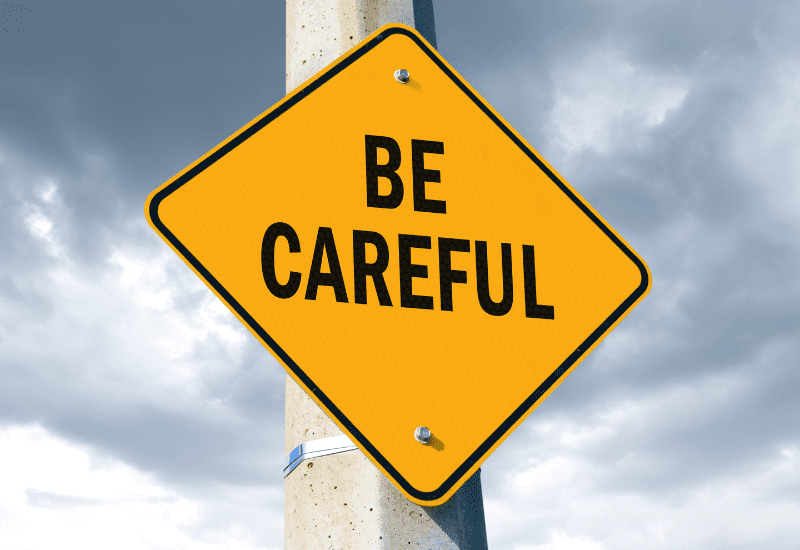
Nobody wants to have their site penalized by Google, and that means that avoiding a Google penalty is an important part of seeing success on the search engine.
One of the biggest reasons that sites get penalized is due to the webmasters wanting to take shortcuts or simplify things.
This can result in mistakes that Google crawlers interpret as spam attempts or even genuine usage of black-hat and gray-hat methods that Google naturally does not like.
If you want to avoid Google penalties, you basically have to play by the rules and build a site that actually holds value for users.
The closer you skirt to pushing past Google’s guidelines, the more likely you are to suddenly get hit by a penalty that you could have avoided.
Navigating Google penalties effectively is fundamentally regarding adherence to established webmaster guidelines.
Engaging in practices that degrade your site’s quality or user experience typically prompts punitive actions from Google, while compliance fosters a secure standing in search rankings. This direct relationship between website management and search engine guidelines underscores the importance of ethical SEO practices.
Adhering to these principles is essential, setting the stage for exploring practical measures in the upcoming section on steps to avoiding Google penalties.
Creating Good Content
The better the content on your site is, the higher you will rank – but this also means that you are far less likely to get penalized overall since there is less of a reason to penalize your site.
As a general rule of thumb, sites are at far less risk of penalties if they offer good content and make themselves worthwhile to readers, no matter what their subject matter is.
The better your content is, the further you are from the edge of Google’s webmaster guidelines, which means that small mistakes do not lead to penalties.
Keeping your website on the very edge of what Google considers acceptable (such as creating the bare minimum quality content to stay afloat) only means that you are much more likely to suffer from algorithm changes.
Managing User Content
User-generated content can have a big impact on your site’s rankings and overall quality, too. For example, a free hosting service may see its SEO suffer if it is being used to create a huge amount of spam sites with no consequences.
If your website allows user-generated content of any kind, then it is important to monitor such pages and content to eliminate any risky features.
This might not be content that you created yourself, but search engines see it that way – any content on a website is the responsibility of the website owner.
Website owners need to regulate what gets posted on their site and eliminate anything that could be seen as spam, especially if it begins to interfere with search traffic and risks a Google penalty.
Varying Links
Make sure that you are keeping your backlink profile varied and free of as many low-quality links as possible.
Your link profile is the core of your SEO, so you do not want to be filling it with links that can damage your rankings and slash your ability to get organic search traffic.
Kick out spam links, remove low-quality backlinks that are not offering you anything, and make sure that you are not working with any businesses that are selling links that Google might notice.
Link buying is a very risky move, especially if you are link building with relevant anchor text on unrelated sites.
If Google detects strange patterns or behavior in your linking habits, you might get hit with a Google penalty before you even realize that they have noticed.
Keeping everything varied and above board is always the best option.
Using White-Hat Methods
Even if you manage to sidestep the threat of a Google penalty by tricking Google itself, any user on the internet can file a Webspam report against you or report your site for not following Google guidelines.
This usually means that a Google penalty is already on the way, and you will not usually have time to adjust the site before the report goes through.
If you are using any black-hat methods that go against the webmaster guidelines, then you can almost certainly expect penalties.
Adherence to a search engine’s guidelines is essential to ranking effectively.
Whether deemed fair or not, these rules set the boundaries for how your site is evaluated and placed within search results. Recognizing this is important as you navigate the complexities of SEO.
This understanding seamlessly leads us into the recap, where we’ll summarize the key strategies for maintaining compliance and optimizing your search engine presence.
To Recap
A lot of this can be a very confusing process that requires a solid understanding of the guidelines you need to follow, as well as a good level of experience with digital marketing and the various systems behind it.
However, these penalties actually are not that hard to understand if you break them down into something simpler – which is exactly what we have done here for you.
Avoid Getting Penalties
Ideally, you never want to have to use a Google penalty checker in the first place.
If you end up needing Google penalty checker tools, then you are already past the point where you can prevent the penalty – but if there is nothing in your Google penalty checker tools and no obvious sign of performance drops, then you still have time to avoid future issues.
Make sure you understand the guidelines and their stance on anything your business is currently doing, from developing sites for mobile users to building quality backlinks.
Sticking to the rules makes it nigh impossible to get a penalty unless something major changes with the algorithm overnight.
Different sites will have to tackle different issues. For example, spammy free host content would require the hosting site to eliminate spam content on their platform, whereas spam backlinks in your link profile would need you to dive in and sort out any links that are not relevant.
Try to pre-emptively avoid anything that could trigger a penalty, and never assume that you “got away” with something just because the penalty does not hit for a few updates.
Google will eventually notice these things as they refine their algorithms, and these changes could hit you at any moment without warning.
Resolve Penalties If You Get Them
Utilizing Google penalty checker tools such as Google Analytics can pinpoint the timing and impact of penalties on your site’s search rankings.
This is important when addressing manual and algorithmic penalties like those from the Penguin Update. While not offering detailed recovery strategies, these tools provide essential insights into the onset of penalties, guiding your subsequent investigative efforts.
Promptly addressing and rectifying any penalties, followed by requesting a review or awaiting an algorithm update, is essential. Proactive avoidance and swift resolution of such issues are vital, underscoring the importance of preventative measures in maintaining the effectiveness of your digital marketing efforts.
This leads to the crucial strategies for safeguarding your site, which will be explored in the following summary of preventing Google penalties.
Safeguarding Your Site Against Google Penalties
Understanding and adhering to search engine guidelines is not just a necessity but a strategic approach to ensure your website gains visibility and retains high rankings. As we’ve explored the intricacies of SEO, it’s clear that compliance with these rules does not only prevent penalties but actively enhances your site’s performance. By integrating the strategies discussed, you can navigate SEO challenges more effectively and establish a robust online presence that stands the test of time and the ever-evolving algorithms of search engines. Moving forward, always prioritize aligning your SEO practices with these guidelines to optimize results and sustain success in the digital landscape.
